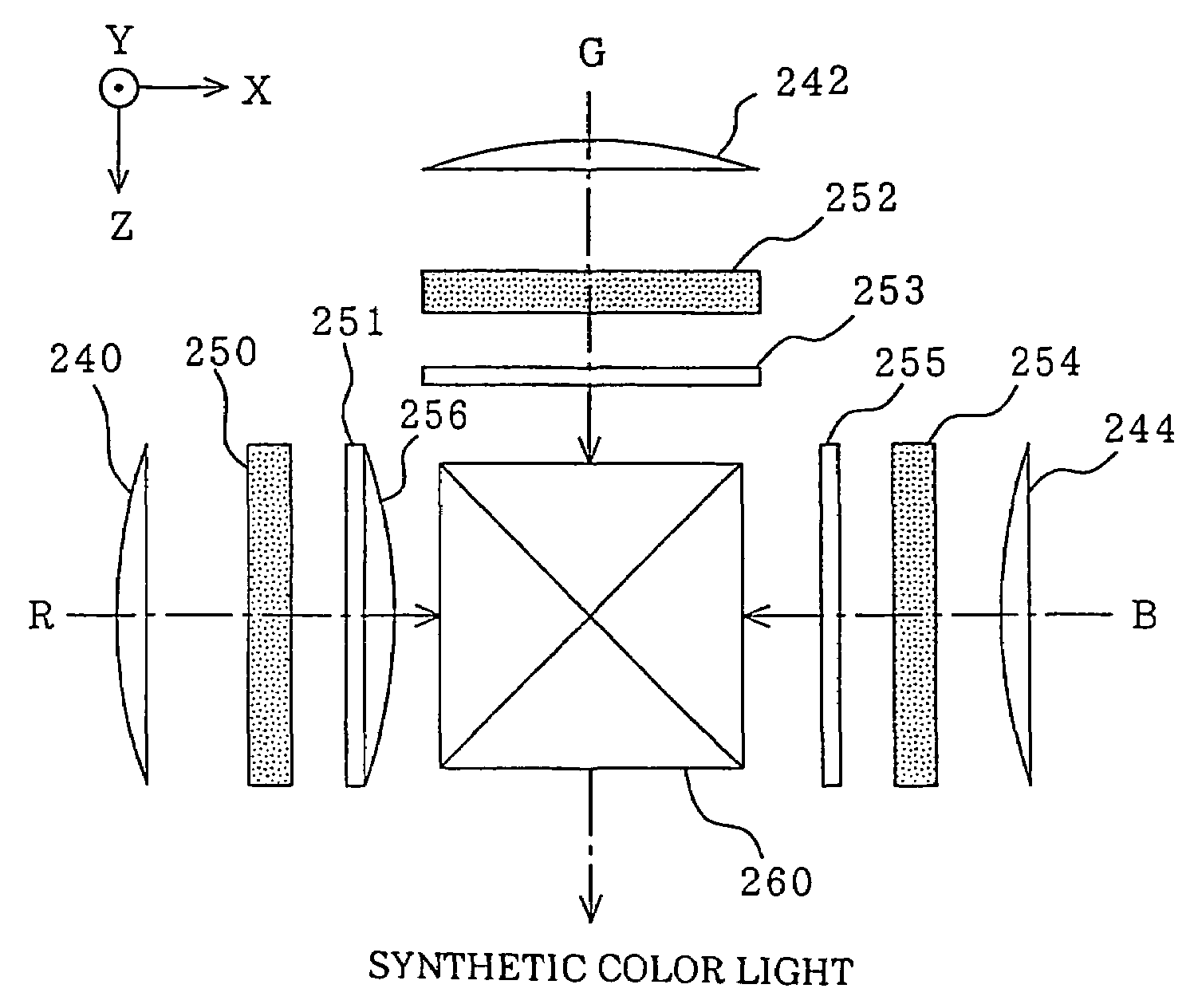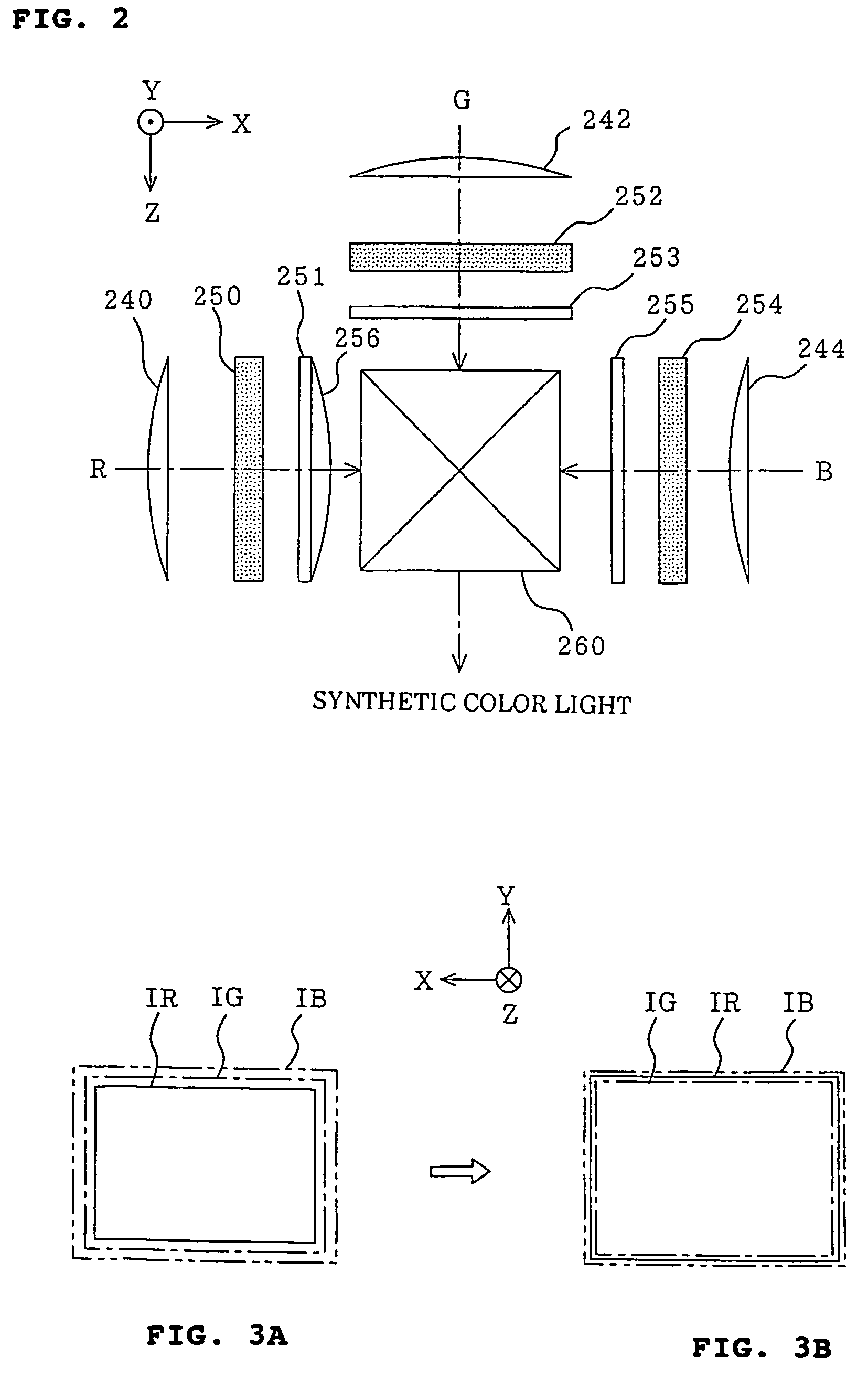Projector for compensating chromatic aberration of magnification
a projector and magnification compensation technology, applied in the field of projectors, can solve the problems of deteriorating the cooling feature of the electrooptical device, difficult to fabricate a lens element or a prism element, and reducing the size of the projected image screen of the three kinds of color light. , to achieve the effect of minimizing the cooling feature and facilitating the integration of optical elements
- Summary
- Abstract
- Description
- Claims
- Application Information
AI Technical Summary
Benefits of technology
Problems solved by technology
Method used
Image
Examples
Embodiment Construction
[0026]FIG. 1 is a plan view of the schematic structure of an overall optical system of a projector according to an embodiment of the present invention. The projector includes an illumination optical system 100; dichroic mirrors 210 and 212; reflecting mirrors 220, 222 and 224; an incident-side lens 230; a relay lens 232; three field lenses 240, 242 and 244; three liquid crystal panels 250, 252 and 254 serving as electrooptical devices; polarizing plates 251, 253 and 255 corresponding to the foregoing liquid crystal panels; a cross-dichroic prism (color-light-synthesizing prism) 260 serving as a color-light-synthesizing optical system; and a projection lens 270 serving as a projection optical system.
[0027]The illumination optical system 100 includes a light source 110 emitting light fluxes in a predetermined direction; a first lens array 120; a second lens array 130; a polarization-conversing element 140; a reflecting mirror 150; and a superimposing lens 160. The first and second len...
PUM
| Property | Measurement | Unit |
|---|---|---|
| color | aaaaa | aaaaa |
| size | aaaaa | aaaaa |
| chromatic aberration | aaaaa | aaaaa |
Abstract
Description
Claims
Application Information
 Login to View More
Login to View More - R&D
- Intellectual Property
- Life Sciences
- Materials
- Tech Scout
- Unparalleled Data Quality
- Higher Quality Content
- 60% Fewer Hallucinations
Browse by: Latest US Patents, China's latest patents, Technical Efficacy Thesaurus, Application Domain, Technology Topic, Popular Technical Reports.
© 2025 PatSnap. All rights reserved.Legal|Privacy policy|Modern Slavery Act Transparency Statement|Sitemap|About US| Contact US: help@patsnap.com



